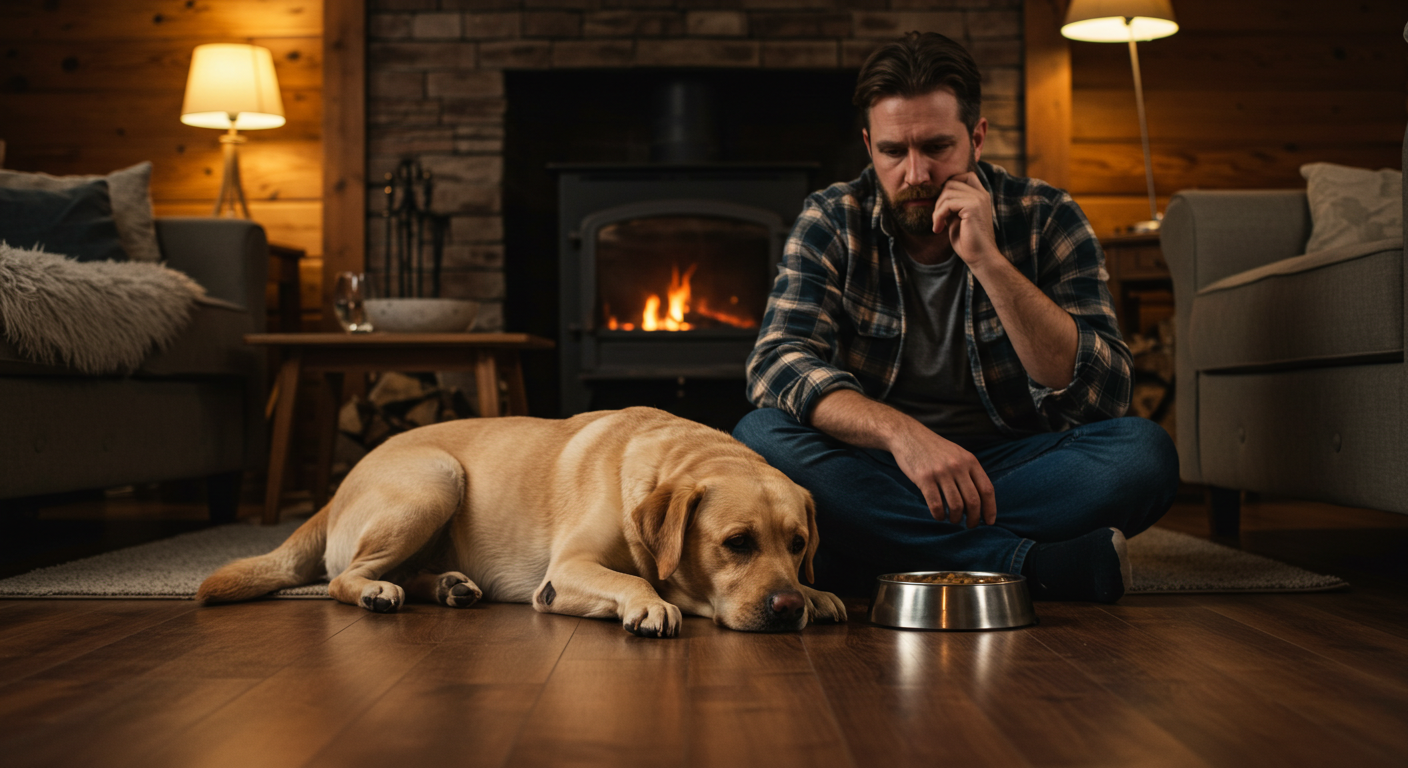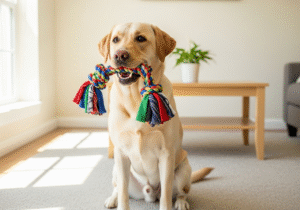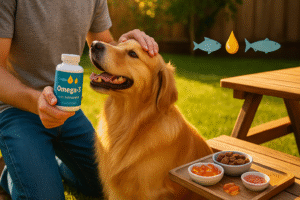Medical Disclaimer: This content is for informational purposes only and does not replace professional veterinary advice. If your dog is unwell, consult your veterinarian immediately
When your sick dog isn’t eating, it’s easy to spiral into worry—especially when they usually sprint to the food bowl. As a veterinarian, I’ve seen dogs refuse meals for reasons ranging from mild tummy upsets to life-threatening conditions. The tricky part? Figuring out how long it’s safe to wait before acting. While some dogs bounce back quickly, others can deteriorate fast—particularly puppies, seniors, or those with chronic illness.
In this article, I’ll walk you through a clinically informed timeline based on veterinary consensus, including insights from the AVMA, Cornell University College of Veterinary Medicine, and the Merck Veterinary Manual. You’ll learn when it’s okay to wait it out—and when you need to call your vet without delay.
Table of Contents
📌 Key Takeaways
- A sick dog not eating for more than 24 hours needs veterinary attention—sooner for puppies, toy breeds, or seniors.
- Water intake is more crucial than food in the short term, but prolonged refusal to eat can lead to serious complications like dehydration or hypoglycemia.
- Common causes of appetite loss include GI upset, infection, pain, or organ dysfunction.
- Try safe, vet-approved home care options (e.g., bland warm food, broth) only if your dog is stable.
🕒 How Long Can a Sick Dog Go Without Food?
A healthy adult dog might skip a meal or two without major concern—but when illness strikes, the situation changes quickly. Appetite loss is a symptom, not a diagnosis, and how long a dog can safely go without eating depends on their age, size, and the severity of their condition.
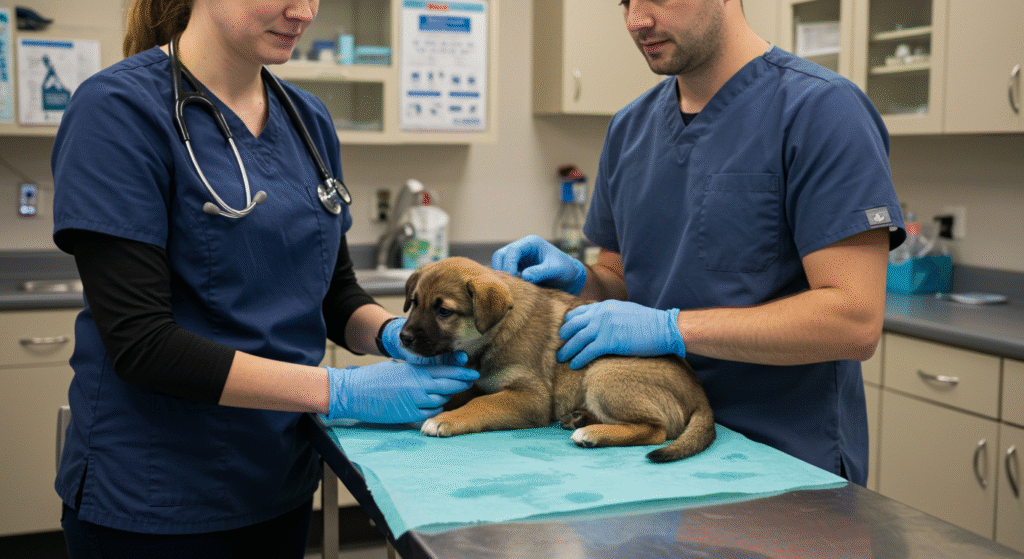
Vet-Backed Timeline
| Dog Type | Max Time Without Food | Clinical Notes |
|---|---|---|
| Healthy Adult Dog | 3–5 days | Only if drinking water and not showing other signs |
| Mildly Sick Dog | 1–2 days | Appetite should rebound; monitor closely |
| Moderately to Severely Sick Dog | < 24 hours | Seek veterinary care if no improvement |
| Puppy (under 6 months) | 12–18 hours | Risk of hypoglycemia; urgent assessment needed |
| Senior Dog or Dog with Chronic Illness | 24–48 hours max | Monitor hydration and check for subtle symptoms |
💧 Water matters more than food at first. Dogs can survive longer without calories than they can without hydration, but if your sick dog won’t eat and isn’t drinking, it’s a red flag requiring immediate care (VCA Hospitals).
🤒 Why Do Sick Dogs Stop Eating?
A sudden drop in appetite often signals that something’s off internally. In my experience, the most common reasons a sick dog stops eating include both physical discomfort and metabolic disturbances. Appetite suppression is the body’s way of reallocating energy to healing—but it shouldn’t be ignored.
Common Medical Causes
- Gastrointestinal upset (vomiting, diarrhoea, pancreatitis)
- Fever or infection (often bacterial or viral)
- Oral pain (dental disease, ulcers, or foreign bodies)
- Medication side effects (antibiotics, NSAIDs, chemo drugs)
- Kidney or liver disease (which alter appetite-regulating hormones)
- Endocrine issues like Addison’s or diabetes
- Cancer, particularly of the digestive tract
Behavioural or Environmental Triggers
- Travel or changes in routine
- Stress from household changes (new pets, visitors, noise)
- Food aversion from a past negative experience (e.g., nausea after a specific meal)
If your dog is usually food-motivated but suddenly backs away from meals, it’s time to dig deeper—and often that starts with a vet visit (Merck Vet Manual).
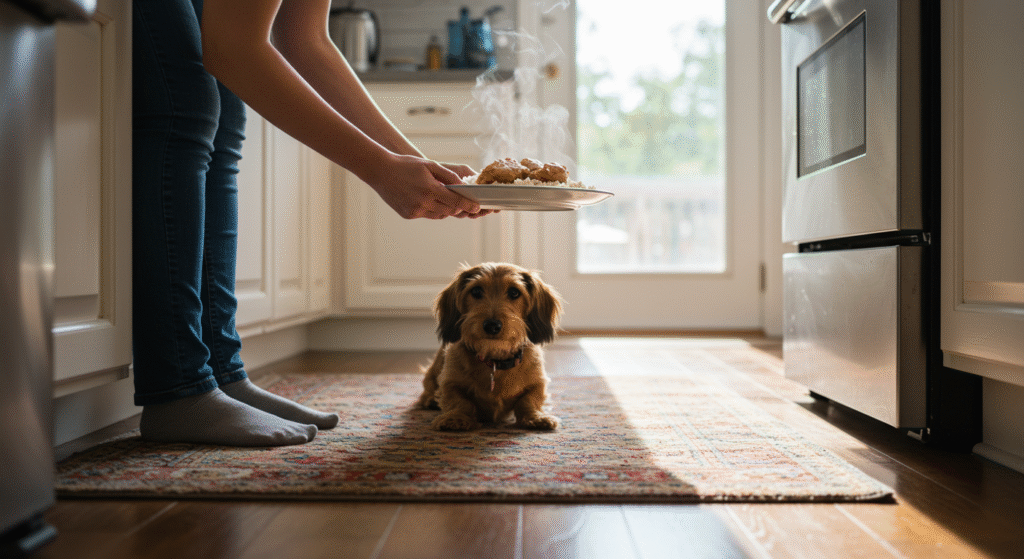
🚩 When Is Appetite Loss an Emergency?
Not all appetite loss is urgent—but some cases absolutely are. I often tell clients: it’s not just that your dog isn’t eating—it’s what else is happening alongside it. If your sick dog shows any of the signs below, don’t wait it out.
Red Flag Symptoms
Call your vet right away if your dog:
- Refuses both food and water
- Vomits repeatedly or has persistent diarrhoea
- Appears lethargic, confused, or unsteady
- Has pale, blue, or grey gums
- Shows signs of abdominal pain (whining, hunched posture)
- Breathes abnormally or pants excessively at rest
- Collapses or has a seizure
Age and Breed-Specific Concerns
Puppies and toy breeds have fast metabolisms and low body reserves. Missing even one or two meals can trigger dangerous hypoglycemia. Seniors, especially those with kidney or heart disease, also decompensate more quickly and may not show “typical” symptoms until very ill.
🐾 When in doubt, call your vet. Early intervention can mean the difference between a quick recovery and a medical emergency (AVMA).
🧴 My Dog Is Drinking But Not Eating—What Now?
If your sick dog is still drinking water and not vomiting, you may have a short window to try safe home interventions—but only for 12 to 24 hours. Beyond that, or if symptoms worsen, it’s time to call your vet.
Short-Term Home Care (≤24h)
Try these gentle strategies to entice eating:
- Offer bland, warmed food like boiled chicken and plain rice
- Add unsalted bone broth or low-sodium chicken broth
- Use meat-only baby food (ensure no onion or garlic)
- Create a calm, quiet environment away from stressors
- Hand-feed or sit with your dog during meals to encourage interest
🧠 Dogs rely heavily on scent. Gently warming food can boost aroma and appetite.
Appetite Stimulating Tricks
With veterinary approval, you might try:
- Prescription appetite stimulants like mirtazapine or capromorelin
- Over-the-counter probiotic pastes to soothe GI irritation
- Anti-nausea medication if your vet suspects queasiness
⚠️ Important: If your dog goes a full day without eating despite these efforts—or stops drinking—don’t delay. Malnutrition and dehydration can escalate quickly, even in previously healthy dogs.
🐶 Why Puppies and Toy Breeds Are at Higher Risk
In puppies and very small dogs, skipping meals isn’t just concerning—it can become life-threatening within hours. Their high metabolism and limited energy reserves make them prone to hypoglycemia (low blood sugar), especially during illness.
Hypoglycemia Warning Signs
Watch for these symptoms in small dogs or puppies who aren’t eating:
- Lethargy or listlessness
- Wobbly walking or uncoordinated movements
- Tremors or muscle twitching
- Weakness or fainting
- Seizures in severe cases
In my clinic, I’ve treated toy breed puppies that collapsed from low blood sugar after just 12 hours without food. Quick action—like a dab of corn syrup on the gums—can help temporarily, but you still need to get to the vet immediately.
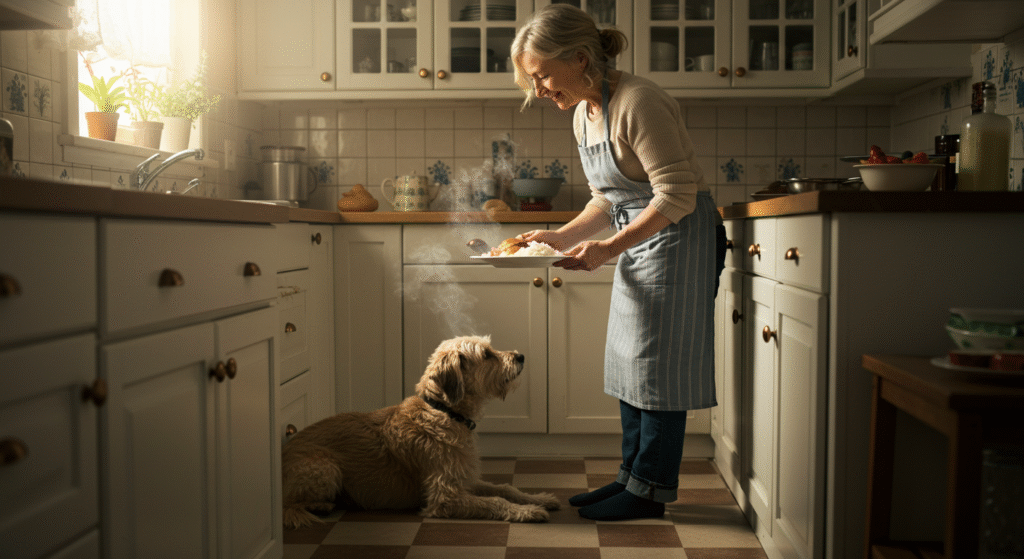
Emergency Timing Guide
| Dog Type | Max Safe Time Without Eating |
|---|---|
| Puppy (<6 months) | 12–18 hours |
| Toy breed adult | < 24 hours |
| Puppy with GI signs | < 12 hours |
If you’re ever unsure, err on the side of caution and seek medical advice quickly.
🏥 Should I Go to the Vet? Quick Checklist
Use this 5-minute home checklist to help decide if your dog’s lack of appetite warrants a vet visit. If you check any of the boxes below, it’s best to call your clinic.
✅ Go to the Vet If:
- ☐ No eating for more than 24 hours (or >12 hours for puppies or toy breeds)
- ☐ No water intake for 12+ hours
- ☐ Vomiting or diarrhoea in addition to appetite loss
- ☐ Lethargy, weakness, or collapse
- ☐ Pain signs like whining, hiding, or hunched posture
- ☐ Pale gums or abnormal breathing
- ☐ Recent toxin exposure or medication change
This list isn’t exhaustive—but if something feels off, trust your instincts and call your vet. Most clinics are happy to triage over the phone and guide you.
🐕🦺 What a Vet May Do During the Visit
When your sick dog isn’t eating, your vet’s goal is to figure out why—then support them while treating the underlying issue. Based on your dog’s history, symptoms, and exam findings, here’s what might happen during the visit:
Common Diagnostics
- Bloodwork to check organ function, glucose, and hydration
- X-rays or ultrasound to rule out blockages, bloat, or masses
- Urinalysis to assess kidneys and detect infection
- Fecal tests for parasites or bacterial overgrowth
Treatment Options
- IV fluids or subcutaneous fluids for dehydration
- Anti-nausea or pain medication
- Appetite stimulants (e.g., Entyce®, mirtazapine)
- Assisted feeding (syringe, feeding tube) if prolonged anorexia
- Hospitalization in severe or unstable cases
Every case is different. Sometimes, the issue is simple—like mild gastritis. Other times, appetite loss is a symptom of something more serious, like pancreatitis or kidney failure. Either way, getting answers early makes a big difference.
💡 Vet-Approved Ways to Encourage Eating at Home
If your dog is mildly sick but stable—and your vet has ruled out serious issues—there are a few gentle strategies you can try at home to tempt their appetite.
Safe Foods That Often Work
- Boiled chicken and plain white rice (no seasoning or oil)
- Unsalted bone broth (great for hydration and scent)
- Meat-based baby food (ensure it’s onion/garlic-free)
- Prescription recovery diets (e.g., Hill’s a/d, Royal Canin Recovery)
- Boiled egg or plain cooked turkey (in small portions)
Feeding Techniques
- Warm the food slightly to release aroma
- Try hand-feeding in a calm, quiet setting
- Use puzzle feeders or lick mats to stimulate interest
- Add a splash of broth or water to dry kibble
- Feed smaller, more frequent meals
What Not to Try
🚫 Don’t give raw meat, unregulated supplements, or table scraps during illness.
🚫 Never use over-the-counter appetite stimulants without veterinary approval.
🚫 Avoid force-feeding unless specifically directed by your vet—it can worsen nausea or create food aversion.
🐾 If mild home strategies aren’t working after 24 hours, it’s time for a recheck.
📌 Final Thoughts from a Canadian Vet
As a vet practising in Ottawa, I’ve met many loving pet parents who waited just a little too long to act when their sick dog stopped eating. I get it—it’s hard to know what’s serious and what’s just a tummy upset. But when food refusal lasts more than a day, especially with other symptoms, that’s your cue to call.
Every dog is different. A spry adult Labrador might handle a missed meal better than a toy poodle with heart disease. Trust your gut, monitor closely, and don’t hesitate to seek help. Most cases improve with early intervention—and your dog will thank you for it.

